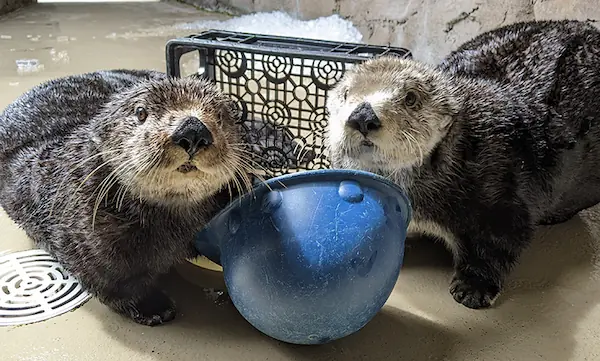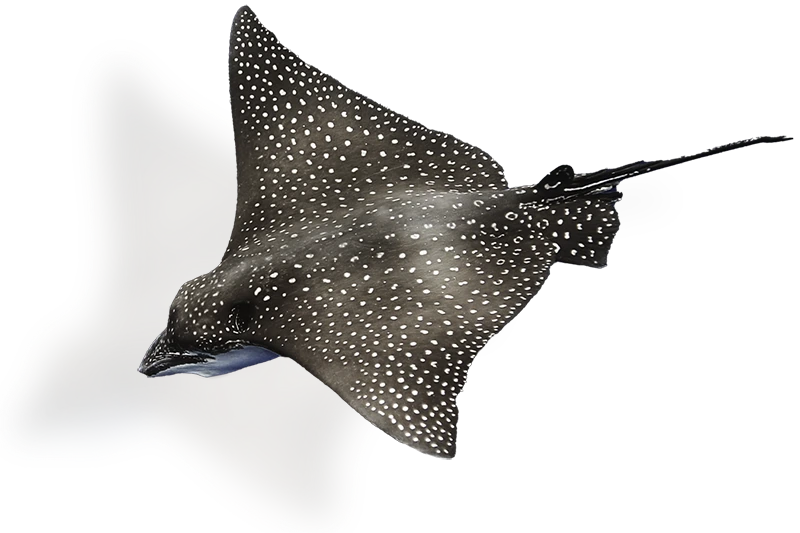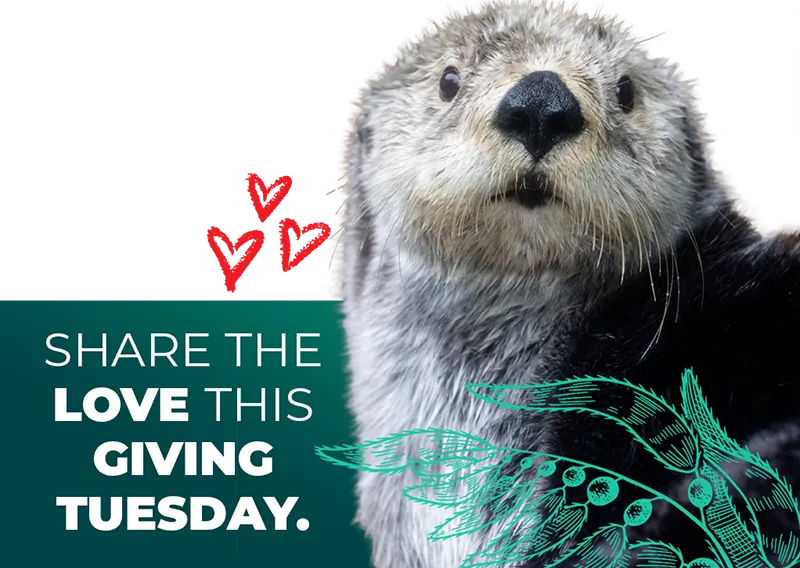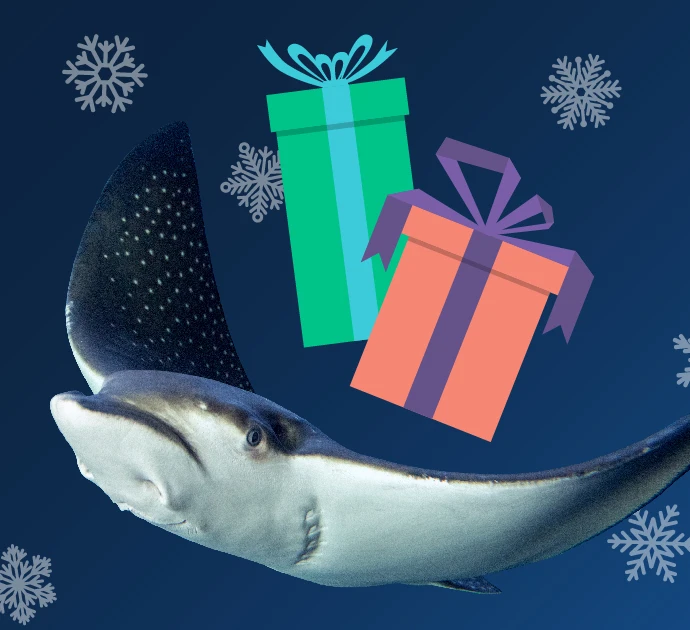Last year, we shared two web stories about Seattle Aquarium team members who show their passion for marine life with a variety of incredible tattoos (check out part 1 and part 2 if you haven’t already!).
Now, to continue celebrating the recent opening of our Ocean Pavilion, we bring you our next installment, featuring some of the people who work with the tropical animals in our care—and their amazing tattoos.
We hope you enjoy hearing from these four outstanding folks and learning the stories behind their ink!
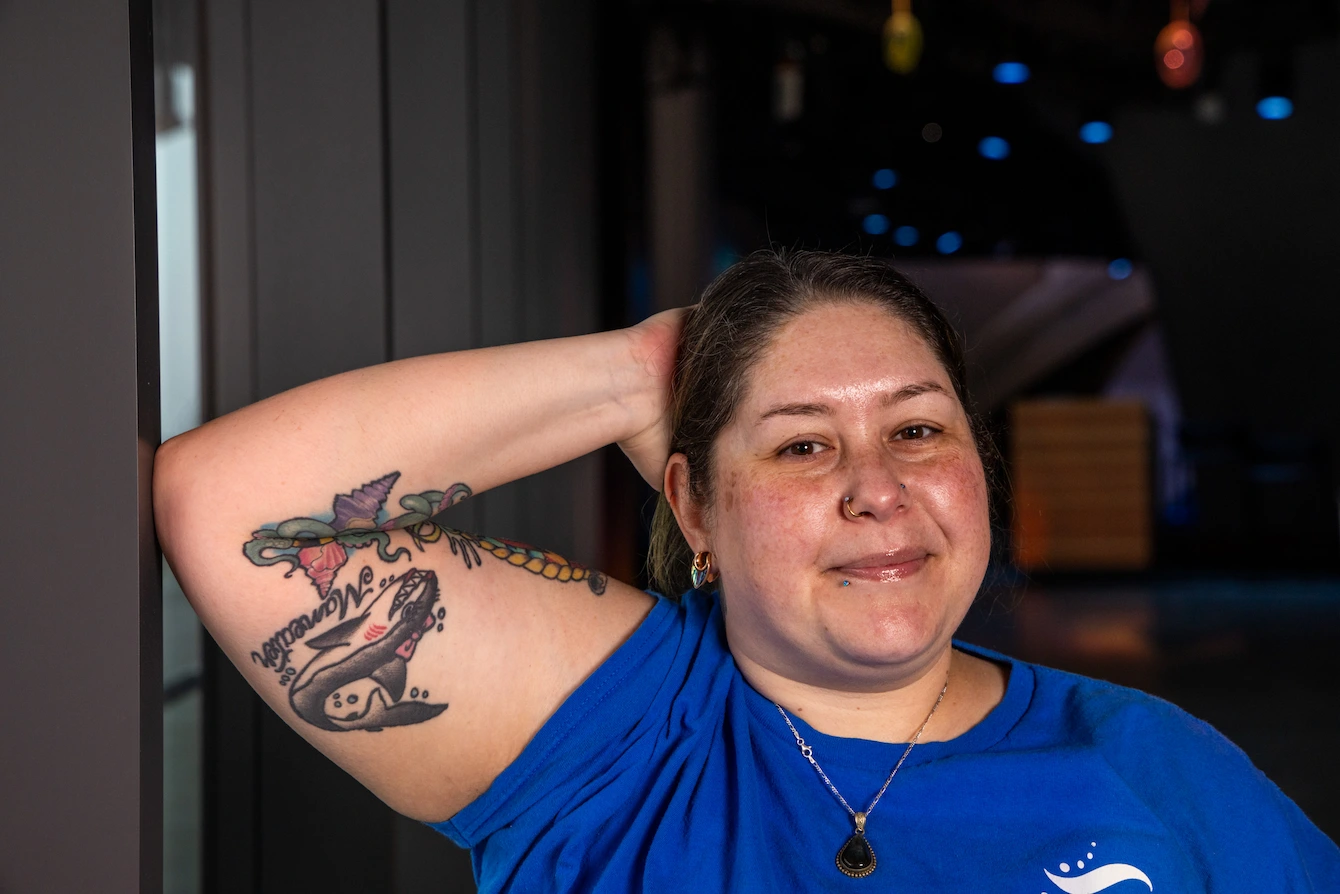
“When I got this tattoo, I just wanted to showcase the ridiculousness of the idea that sharks are man-eaters. It was foretelling my future and I didn't even know it.”
—Amber Ginther (she/her), supervisor of tropical fish and invertebrates
Working with sharks so closely, I get to see how great they are—just so majestic and inspiring. The love that I’ve developed for them is really understanding their gentle nature and that, like any other animal, they’re just trying to live life. To me, they have a really calming presence. The way they move through the water, how they’re alert to their surroundings. And their playfulness. I wish people knew how gentle they are. And that there’s really no reason to fear them.
Sharks, in some of their social systems—especially great hammerheads—are very matriarchal. The females hold the dominant role in the school. At least that’s what we’ve noticed with sharks in human care. Maybe the world should take note.
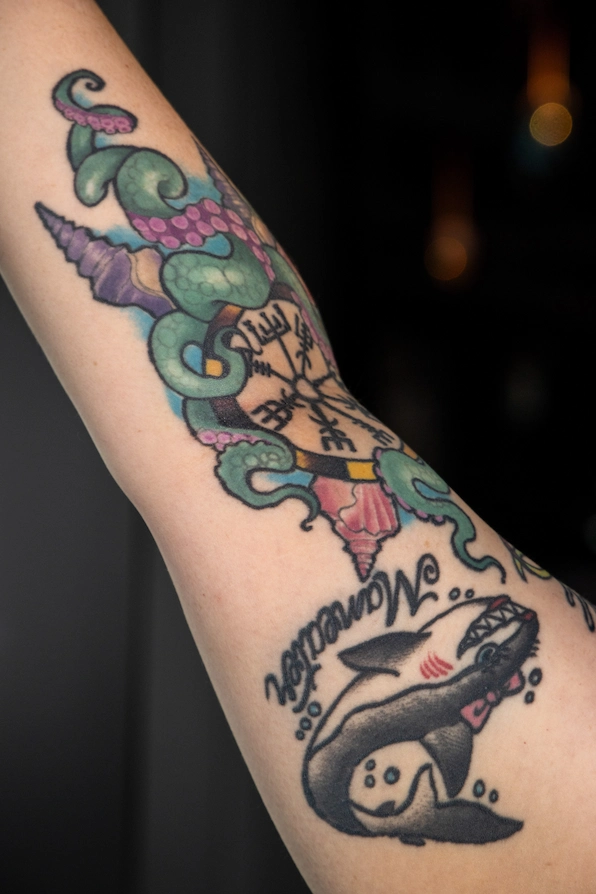
I’m a descendant from the Southern Tewa tribe and Mescalero Apache tribe and recently did a project on Indigenous science, how it evolved, and how we can incorporate it to see things from an animal’s perspective. I think that’s the way we do better at animal care, through deep empathy. And part of Indigenous science is really conjuring that empathy.
As an Indigenous person, I connect personally with the Aquarium’s mission. A lot of Indigenous people are trying to keep their traditions alive, traditions that have disappeared over time because of colonization. I think that’s why conservation is so important to me—it’s more than just conserving an animal or land, it’s about conserving tradition and the traditional knowledge that has helped us manage lands since time immemorial.
We’re conserving these things not to conserve the past or the memory, but to help the future move forward without them completely disappearing. I feel very close with the mission at the Aquarium—in my own personal mission of recapturing traditional ways of being.
—Amber Ginther (she/her), supervisor of tropical fish and invertebrates
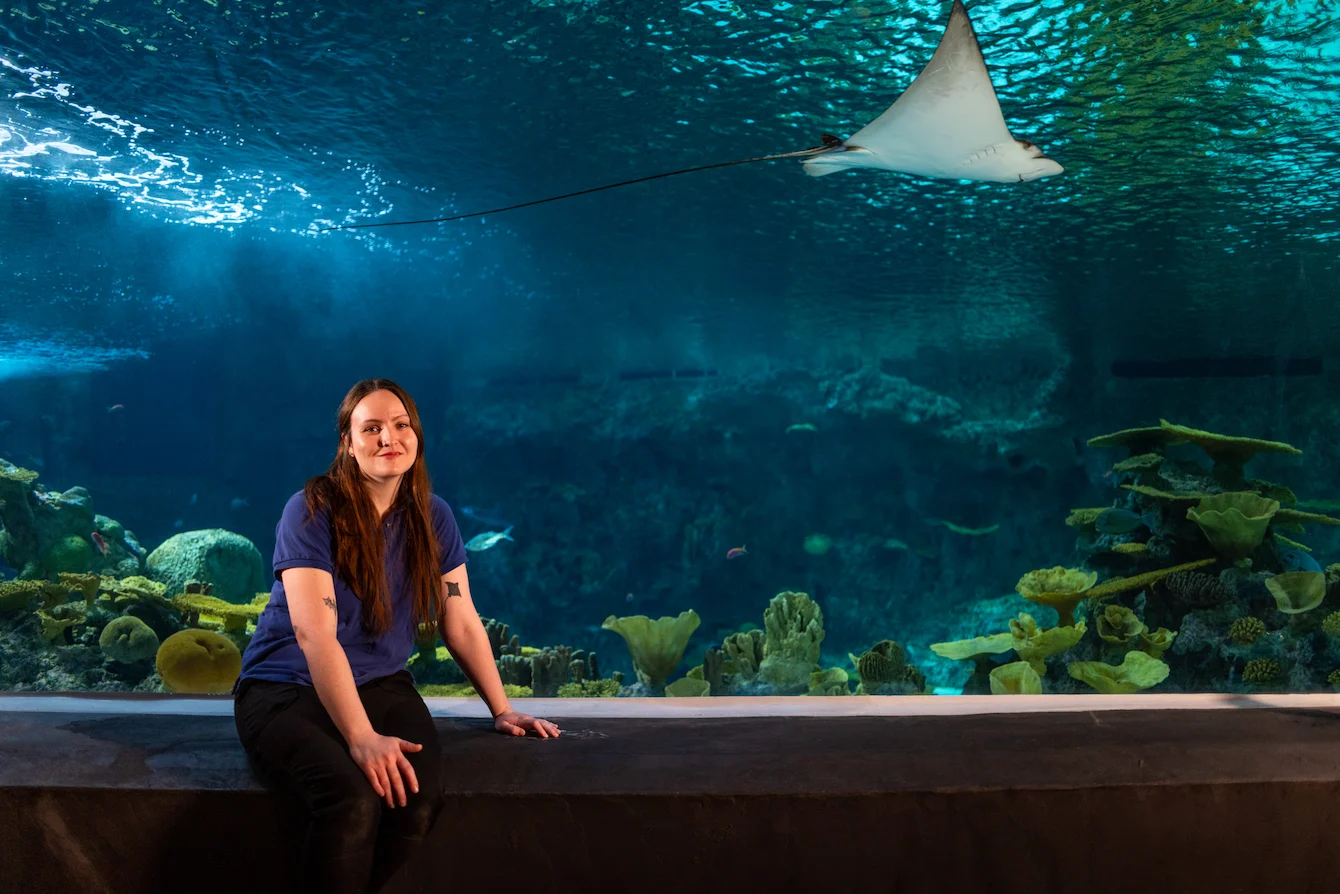
“I’ve always had a curiosity and love for the ocean. I grew up in a landlocked state so it wasn't something that I could just go and see.”
—Makayla Taylor (she/her), aquarist
I remember going to an aquarium for the first time as a kid. I was enamored with everything—watching people feed the fish and the sharks and thinking, “Wow, I want to do that.”
I did an internship here at the Aquarium in 2020, then got a part-time job at Point Defiance Zoo & Aquarium. That’s where I first encountered spotted eagle rays—two of them are actually here now. It’s really cool that it worked out like that because I’ve known them for almost five years and gotten to work with them quite extensively.
A lot of people don’t know that spotted eagle rays are identified by their head spots: Each pattern is unique. For my tattoo, I worked with the artist to make sure that the spots are in the same pattern as one of the eagle rays that I worked with closely at the Point Defiance Zoo & Aquarium.
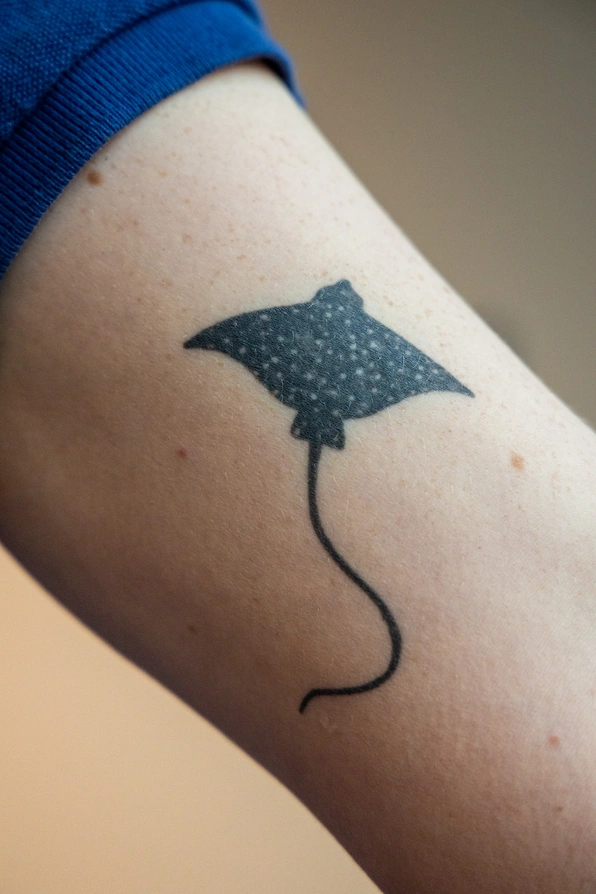
The best parts of my job are definitely feeding and training. Seeing the animals make those connections and feel more comfortable with us, building that relationship of trust. Because they’re so intelligent, training them for their feeds and different veterinary procedures has been an incredible journey. The three spotted eagle rays in our care have pretty different personalities. One of them is rambunctious. One is more even. And the juvenile is a healthy mix of the other two.
But they all love clams. We feed them the whole clam—shell and everything. They’ve got these crushing plates, kind of like a row of teeth, on the top and bottom. They use them like a nutcracker, basically, and just crunch up the clams. They need crunchy food to help them shed their teeth, so they crush the shells and eat the clam inside. They love it.
—Makayla Taylor (she/her), aquarist
Tattoo by Jasmine, @inkedbyjasmine
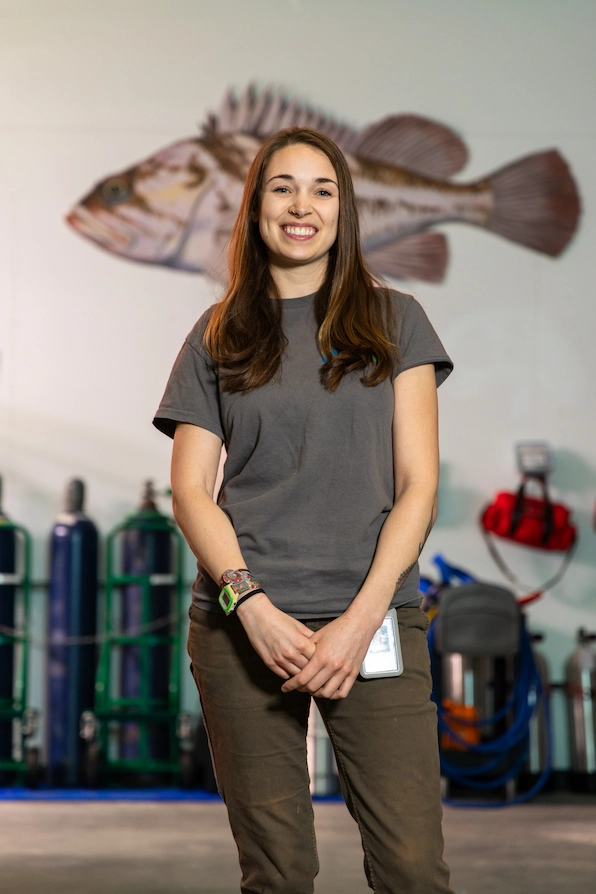
“Just because we live here, it doesn't mean that animals on the other side of the ocean aren't affected by our actions. It's important to view it all as one system.”
—Casey Zinkievich (she/her), aquarist
My dad took me fishing when I was little and the first time I saw a bass, I thought it was the coolest thing ever. From there, I just got really into fish. Not even pretty, tropical ones—weird, ugly freshwater fish that you see in lakes and rivers. That’s why I was so into it when my first job was with freshwater biology even though I specialized in marine biology.
I was hired by the Missouri conservation department and they had a side project for critically endangered pallid sturgeon. Learning about them and then actually seeing them blew me away. They’re so weird and ancient-looking that you wouldn’t really expect them to have personalities, but they definitely do.
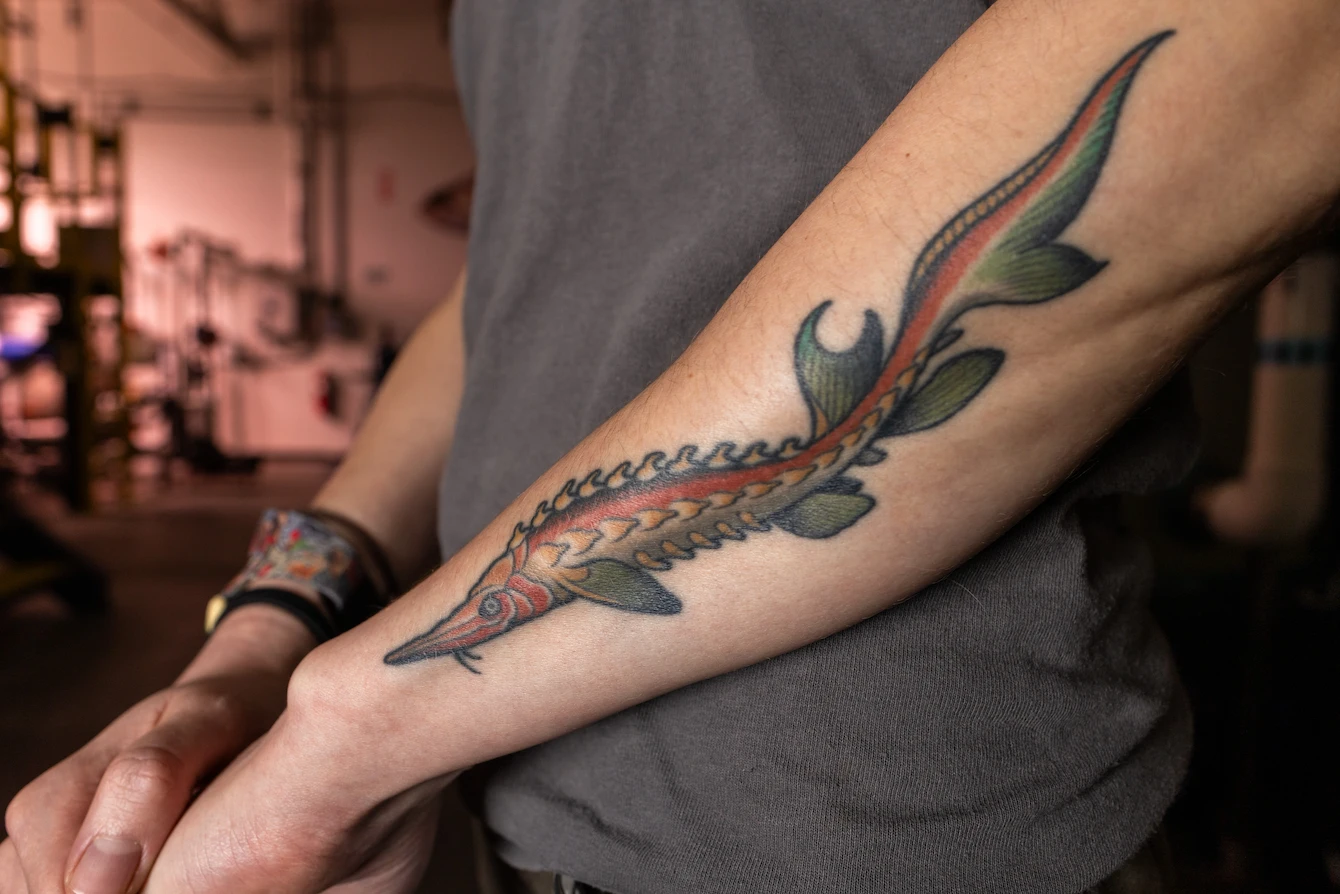
It’s not tropical versus temperate or freshwater versus marine: I’m equal opportunity—I love all fish. I work with tropical fish now but I’ll always have a special place in my heart for sturgeon.
The reason I started to care about these creatures was because my dad took me fishing when I was a kid and I understood that these animals are important. We need to take care of them. Maybe not everyone gets that opportunity or would be inspired by seeing a bass. But when you come to the Aquarium and see these amazing animals that you might never get to see in the wild, it really makes you appreciate them and want to protect them. And it’s my job to make sure they have the best life possible, so when people come to the Aquarium, they can be inspired by happy, healthy animals that are thriving.
—Casey Zinkievich (she/her), aquarist
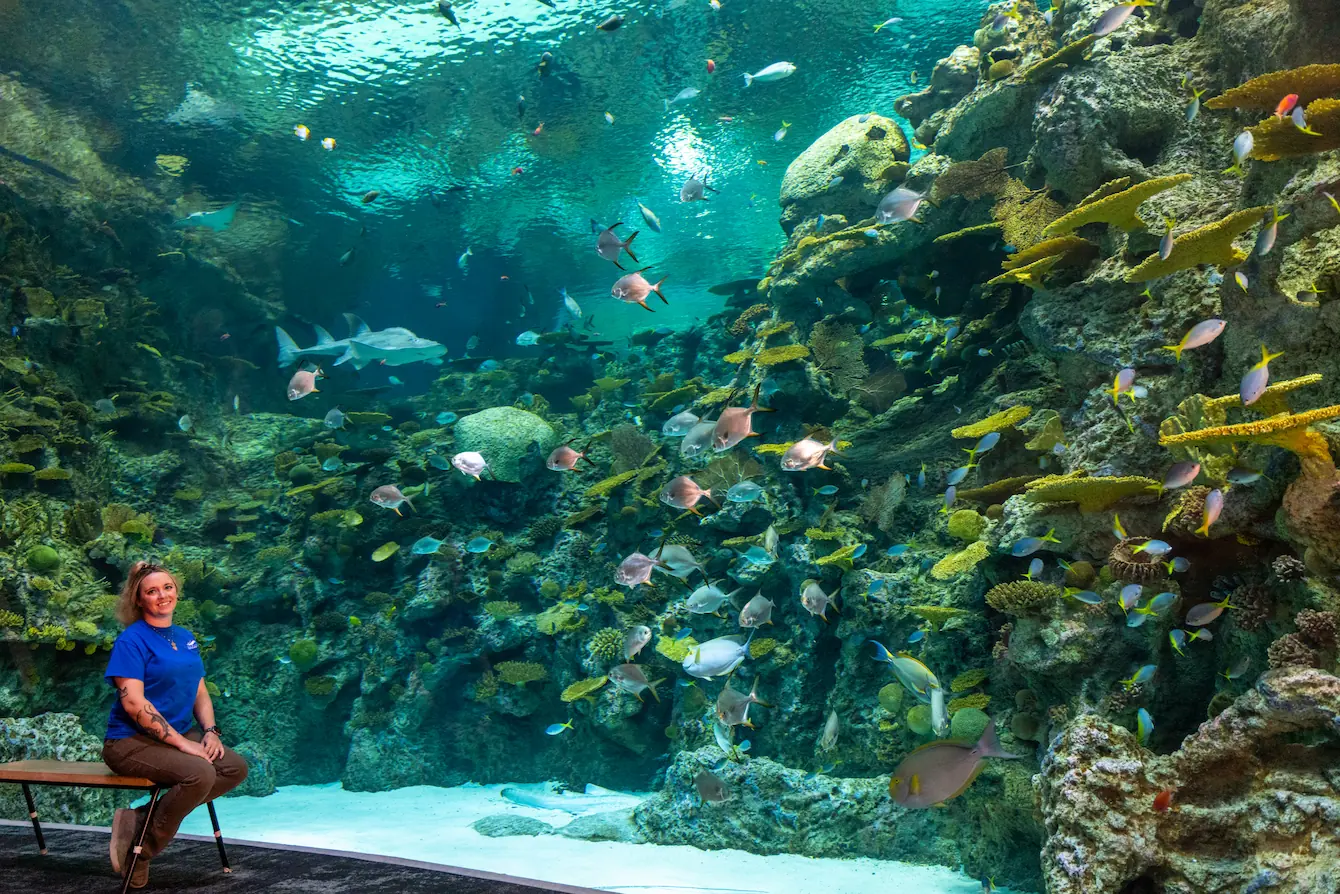
“The biggest thing we can do is educate people. Showing them these animals and their habitats so they know it's not scary and dangerous. It's just this other world that we share a planet with.”
—Charmaine von Kriegenbergh (she/her), associate curator of tropical fish and invertebrates
When I was little, we were watching an episode of Reading Rainbow where LeVar Burton talks to a marine biologist. I asked my mom, “What does that mean?” She told me and I said, “Great, I’m going to do that.” In college, I got a bachelor’s in biological sciences with a marine biology emphasis.
The bowmouth guitarfish on my arm is in honor of Rhina, the one we have here. I was her primary aquarist and developed her training plan—I just fell in love with her. It’s my first tattoo of an animal that I’ve worked with.
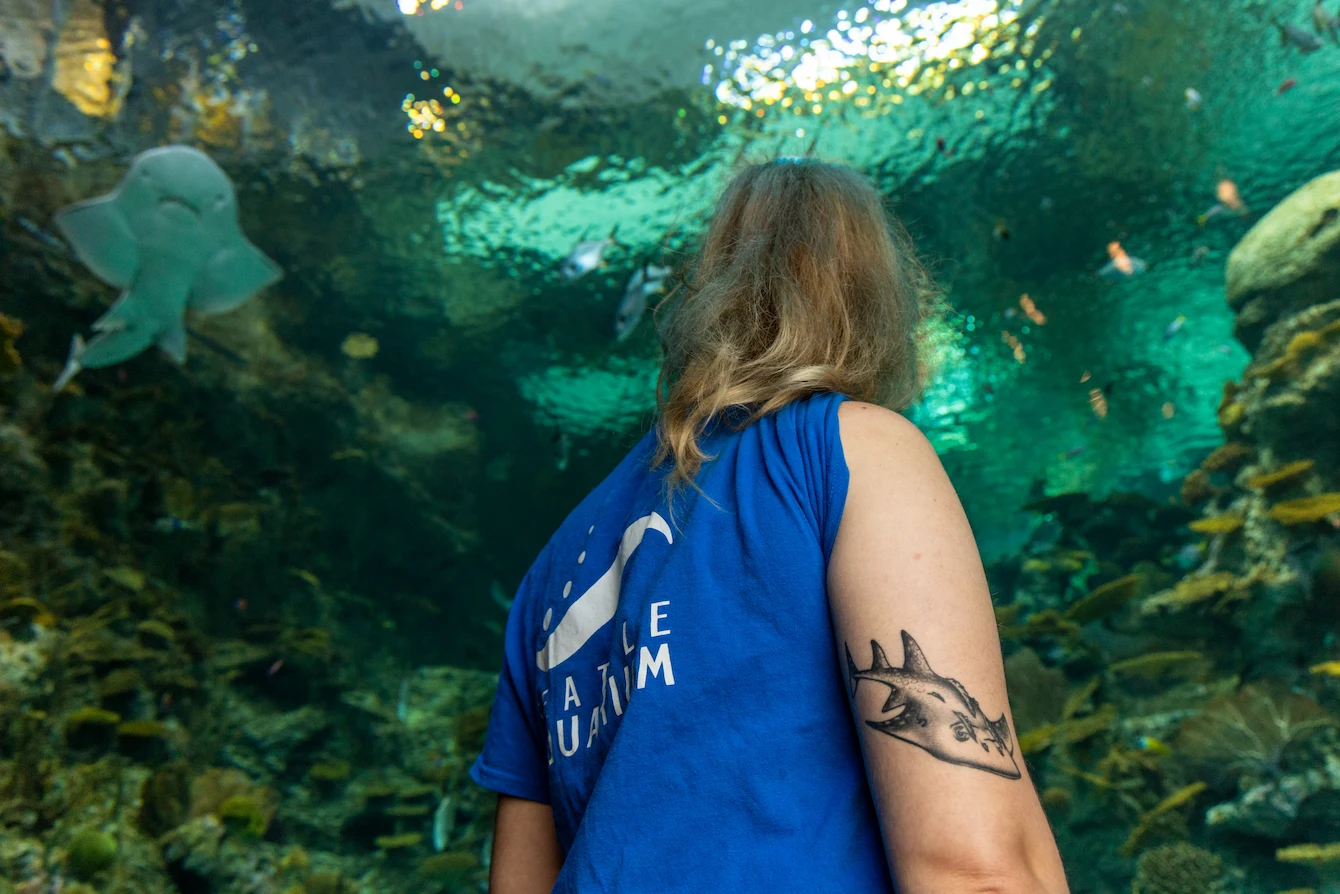
Bowmouth guitarfish are unique animals and the first thing we learned was that they are incredibly messy. Their diet is 60 to 80% crustaceans—shrimp and Dungeness crab in the shell, Pacific spiny lobster with the carapace—and they can digest it, but a lot gets pooped out with big chunks of shell. Rhina also leaves a trail of shells in her wake while she’s eating. She’s just really messy.
The day she moved into the Ocean Pavilion, I was snorkeling and helped guide her out of the acclimation pool and into The Reef habitat. I was sobbing underwater, seeing her swim out. It was such an exciting moment and I was so proud of the team, how everyone worked together to accomplish it so smoothly.
I think giving our guests the opportunity to really connect with the animals in our care is the biggest impact we can make. Going to aquariums as a kid and getting the opportunity to see and learn about animals that I never would have seen otherwise is what made me love them. It’s why I wanted to get into this this field.
—Charmaine von Kriegenbergh (she/her), associate curator of tropical fish and invertebrates
Tattoo by Tasi Tautolo, @tasitoss
Zebra shark, tiger shark, hammerhead shark and manta ray tattoos by Alexandra Grace, @alexandrastabs
Want to learn more about spotted eagle rays, bowmouth guitarfish and sturgeon? Visit the Seattle Aquarium to see them in person—who knows, you may even spot one of the team members featured here! Plan a visit today.
